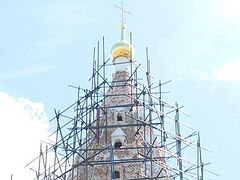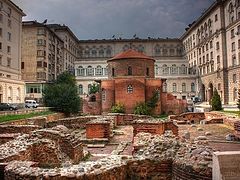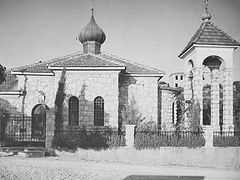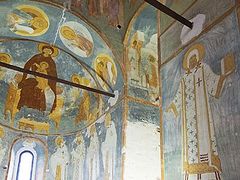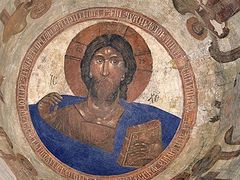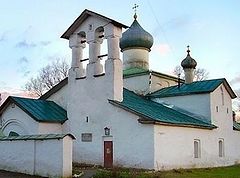Moscow, May 31, 2019
Several old towers and the wall of the famous Donskoy Monastery in Moscow will be restored, Mosocw mayor Sergei Sobyanin said after visiting the monastery and examining the architectural ensemble.
Funds will be allocated from the city budget for the restoration of 8 towers and 14 sections of the wall, reports Interfax-Religion.
“In Russia, there are not so many active monasteries that survived the Time of Troubles, the war with Napoleon, and the early Soviet years. One such historical monument is Donskoy Monastery. It is a pearl of Moscow. Our entire history is connected with,” the mayor said, reports the Synodal Department for Monasteries and Monasticism.
“The ensemble of the monastery is reviving,” said Sobyanin. “But there is still much to do. Restoration will continue with federal and regional funds, and with the donations of benefactors.”
“We just told Vladyka that in order to speed up the restoration of the walls and towers, the main cathedral, the city will actively help,” Sobyanin said after his visit to the monastery.
It is also notable that the people of Moscow themselves help with the restoration work. As Minister of Culture Vladimir Medinsky explained, people visit the monastery in their free time to offer their time and labor. Any volunteer activity aimed at restoring monuments will receive full support, Medinsky stated.
A hotel for pilgrims will soon open in one of the buildings of the monastery, said abbot Bishop Thomas of Bronnitsy. The restoration of artistic tombstones of the Donskoy necropolis is also carried out with funds from the city budget. 23 such tombs were restored over the summer and it is planned to restore 7 more.
On Wednesday, OrthoChristian reported that the Sofia, Bulgaria city council allocated $114,000 for the restoration of the three Orthodox churches.
***
Founded at the end of the 16th century, Donskoy Monastery became both a symbol of faith and strong fortress, its impregnable walls protecting Moscow from attacks from the south. The monastery was continuously expanded and flourished during tsarist times, with the addition of churches, a bell tower, a refectory, and even a small hospital.
The monastery was nearly destroyed following the revolution, but in the end, an architectural museum was arranged in it. The sacred territory was returned to the church in the 1990s, and the restoration of dozens of cultural monuments there has begun in recent years, including, in particular, the restoration of the original appearance of the Church of the Archangel Michael. The necropolis is currently being restored.
Follow us on Facebook!


